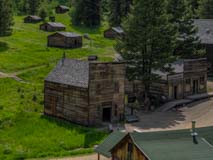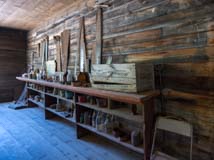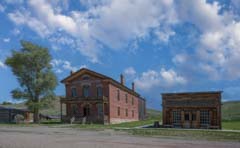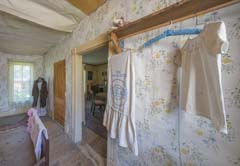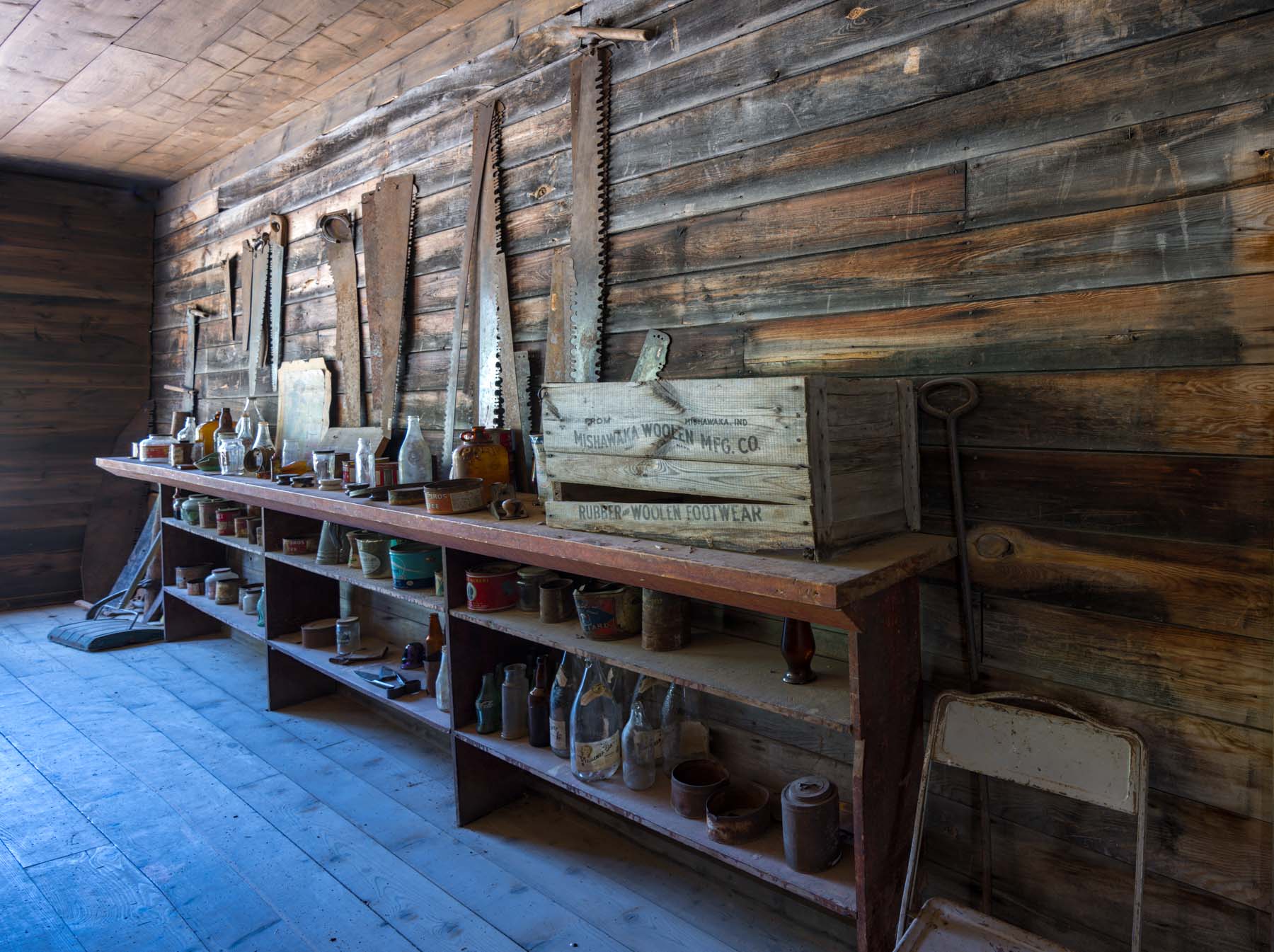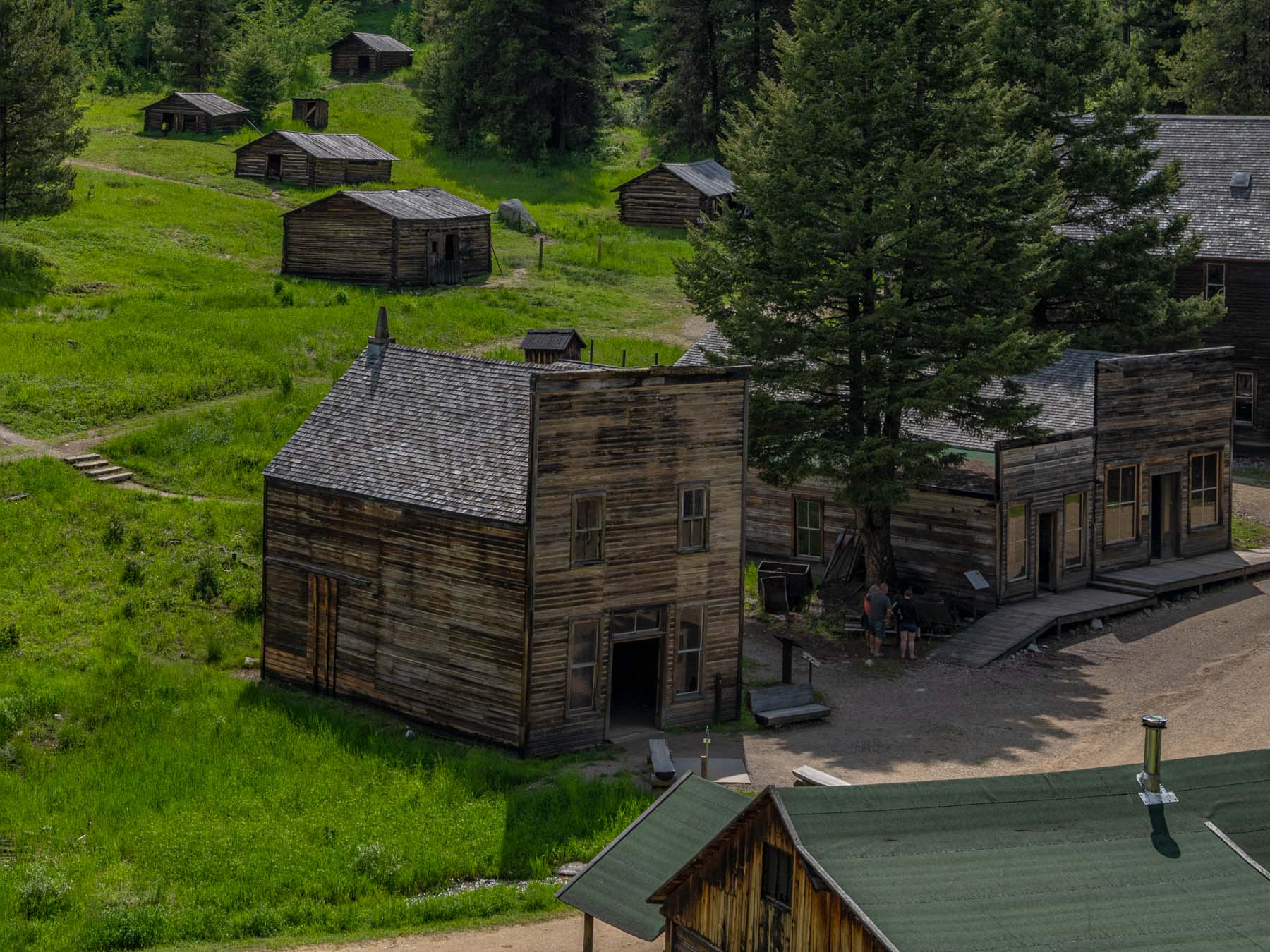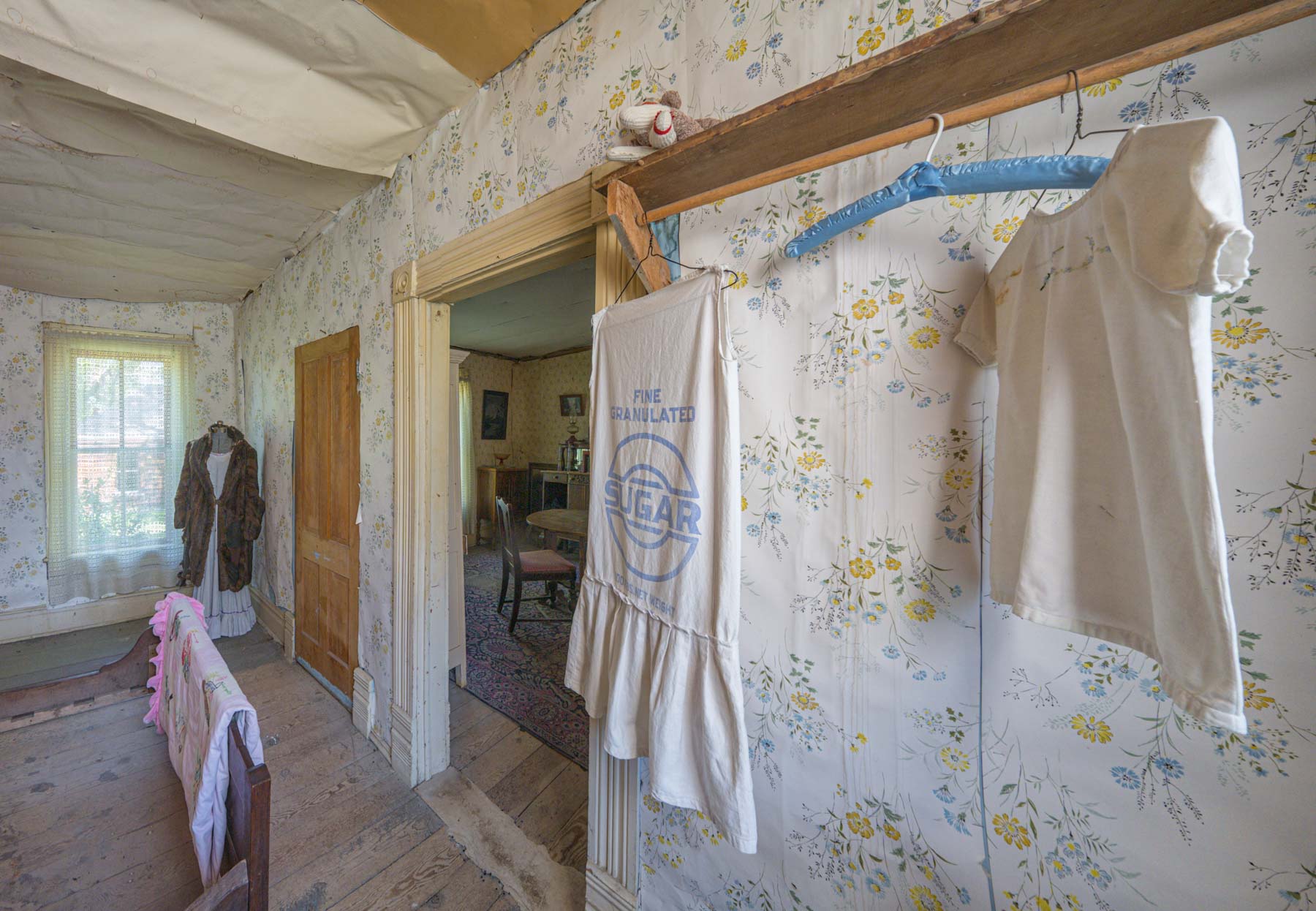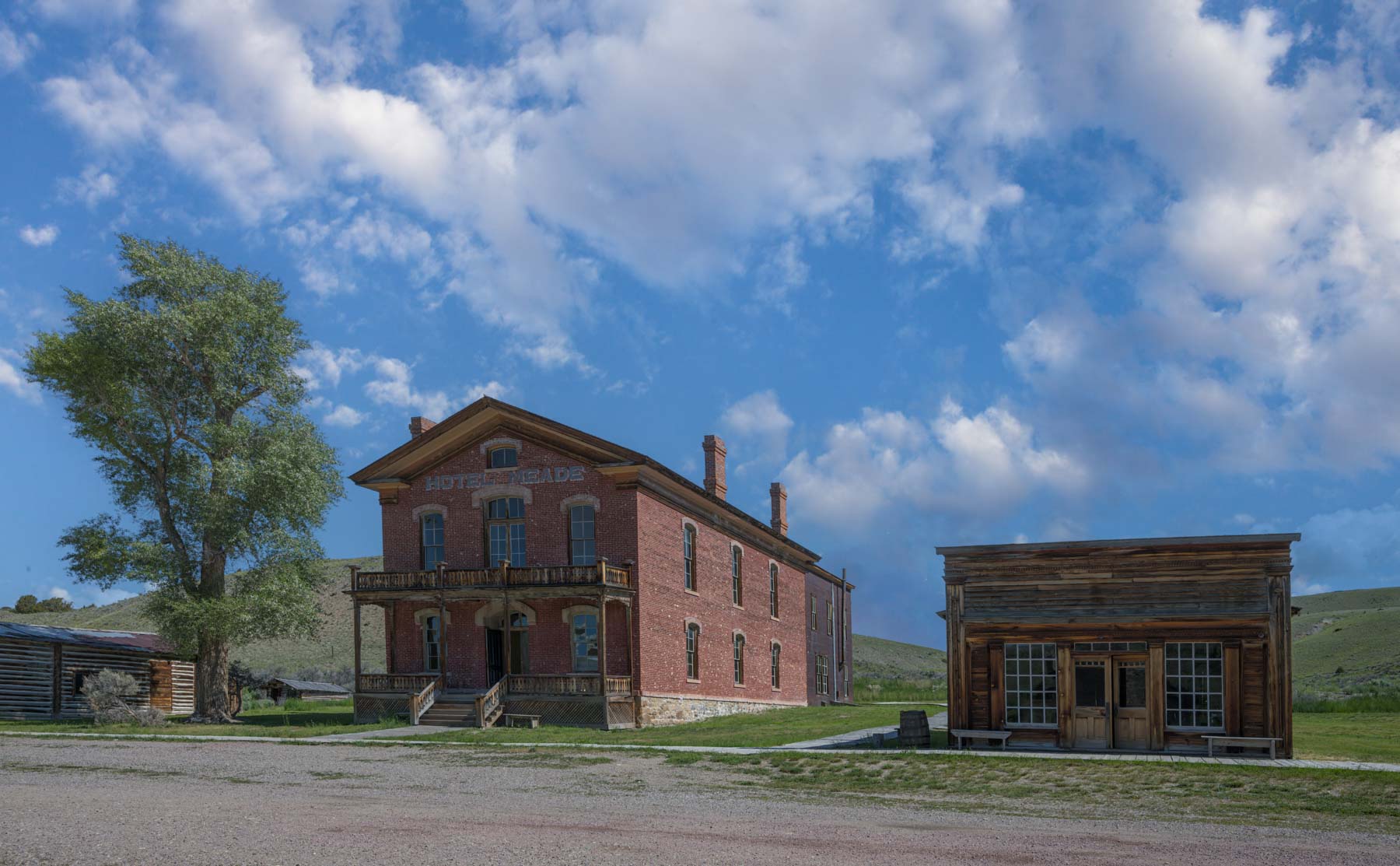Montana Ghost Towns
Wikipedia lists over 100 ghost towns in Montana. The towns of Bannack and Garnet stand out from these in that they have many partially furnished, largely intact buildings, a rich history, and are non-commercial. Tom Till's and Teresa Jordan's book "Great Ghost Towns of the West" contains spectacular images of both and inspired me to visit them.
Garnet
Garnet is an abandoned mining town that dates from the 1860s. The town is approximately 6,000 feet (1,800 m) in elevation. The town was listed on the National Register of Historic Places as the Garnet Historic District in 2010. The Bureau of Land Management manages the town. Admission is $3 per person; NPS annual or senior passes are accepted.
Best access to Garnet is from Montana Route 200. On 200, between mile markers 22 and 23, turn south at the Garnet Range Road, about 30 miles east of Missoula. Follow Garnet Range Road for approximately 11 miles to Garnet, where the parking area is located. A .25-mile trail leads from the parking lot to town. Alternatively, Garnet is accessible via a rough one-lane road from US 90. The road is steep and narrow, and there are few opportunities to back up or turn around should you encounter other traffic or an obstacle. The road can be muddy, especially in May. This road is not recommended for trailers and RVs. Frankly I wouldn't drive it in most 4x4s.
Garnet is open all year however, the roads to it are closed from December through April to all but snowmobiles, snow shoes, and skis. The visitor center is open daily from 10 AM to 4:30 PM from late May through September. Garnet is best visited in late Spring through early Fall. From December through February, expect low temperatures between 10 and 15° F, and snow is common.
The closest major town to Garnet is Missoula, Montana, which is 30 miles away. Direct flights to major cities in the west and lodging, food, and gas are easily available there. Boondocking is available on BLM land near Garnet. You must camp at least 0.5 miles from the ghost town.
Good landscape images of Garnet are possible from the parking lot trail. Most building interiors are accessible while the visitor center is open. The interiors of the schoolhouse, Kelly's Saloon, Davey's store, the J.K. Wells Hotel, and the Adam House are worth shooting. The second floor of the JK Well's hotel is particularly photo-worthy. An ultrawide lens is needed to capture whole rooms. Shoot wider than normal so you can correct the perspective in post-processing. Shift lenses are also useful for correcting perspective. You'll need to bracket exposure if there are windows in the scene.
Bannack State Park
Bannack is a ghost town in Beaverhead County, Montana. Bannack was founded in 1862. The town is a National Historic Landmark managed by the state of Montana as Bannack State Park. In 1862 Bannack was the site of Montana's first major gold discovery. It served as the capital of Montana Territory briefly in 1864 when the capital was moved to Virginia City. Bannack continued as a mining town, though with a dwindling population. The last residents left in the 1970s.
Bannack has a storied history. In 1864 Bannack's sheriff, Henry Plummer was accused by some of secretly leading a ruthless band of road agents. Plummer and two compatriots, both deputies, were hanged, without trial, at Bannack on January 10, 1864. A number of Plummer's associates were lynched, and others banished on pain of death if they ever returned. Twenty-two individuals were accused, informally tried, and hanged by the Vigilance Committee (the Montana Vigilantes) of Bannack and Virginia City. Nathaniel Pitt Langford, the first superintendent of Yellowstone National Park, was a member of that vigilance committee.
Bannack is the best-preserved ghost town in Montana. Sixty historic log, brick, and frame structures remain standing, and most are open to the public. Lodging is available in Dillon, Montana; about twenty miles from Bannack. Bannack State Park includes a tent/RV campground with 28 sites. Sites can be reserved at the Montana State Parks website. During the summer, Bannack is open from 8 AM to 9 PM, and from 8 AM to 5 PM during the winter. The campground is open all year. Admission to Bannack is free for Montana residents and $8 per vehicle for non-residents. Admission is free if you stay at the campground.
Photogenic locations in Bannack include Doctor Ryburn's House, the second floor of the Hotel Meade, and the barber's chair in Skinner's Saloon. The back room of the Hotel Meade is behind glass. Ask park personnel if they can open it for you briefly. If they won't, shoot it with your camera flat against the glass to minimize reflections. The schoolhouse and the Methodist Church are also worth photographing.
Google Map and Directions
Here is an overview map showing the locations of Bannack State Park and Garnet ghost town and the names of some of the buildings within them. Brochures are freely available at the visitor center in Garnet ghost town, and cost $2 at Bannack State Park; I suggest you purchase them.
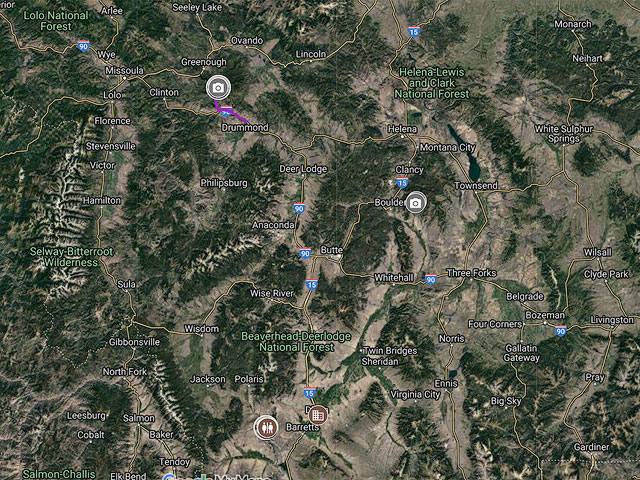
- Click to download a KMZ file (Note - in IE Right Click and choose Save Target as)
- Click to download a KML file (Note - KML files do not include custom icons)
- Click to download a GPX file (Note - in IE Right Click and choose Save Target as)
